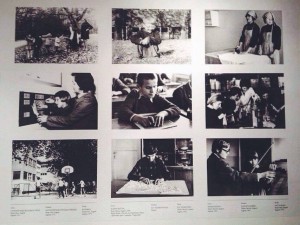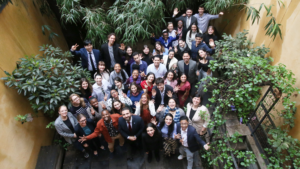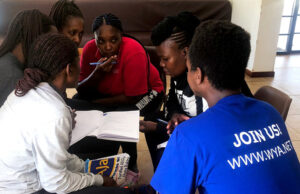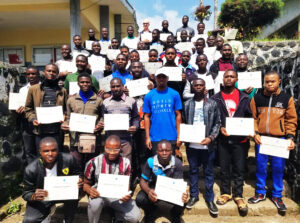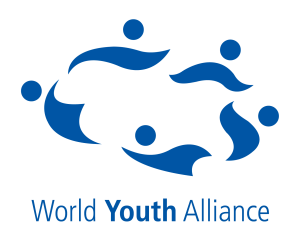120 godina Zemaljskog zavoda za odgoj slijepe djece
[tabs]
[tab title=”English”]
Typhlological Museum
On December 17, 2015 the exhibition 120 Years of National Institute for Blind Children Upbringing was opened in the Typhlological Museum in Zagreb, Croatia, and it will remain open until January 22, 2016. The purpose of the exhibition is to mark the anniversary of the Institute’s founding in Zagreb with the multitude of exhibited items through their antiquity which testify its development. The Typhlological Museum itself was founded after long-standing ideas and the gathering of the heritage which it holds today.
A Picture of the 19th Century
The 19th century in Europe was a time of economic expansion, but Croatia was struck by the pauperization of the countryside which led to many negative consequences for society. At that time Croatia was among the leading countries in Europe by the number of blind people, but on society level, the problem was not recognized as needing an urgent intervention. Thanks to foreign influence in areas of public and cultural life, people’s awareness changed and traditional forms of care for blind people were abandoned and new solutions found.
Devotion of Vinko Bek
Having seen the ill fate of our blind people, I had decided as early as 1886 to raise my voice for their sake“ is Vinko Bek’s sentence with which he begins his request. Aware of the poverty and the inability of the parents to afford education for their blind children, Bek adressed the public in writing and searching for funds needed for the work of an institute for blind people. Five years later, the National Institute for Blind Children Upbringing opened. Children were taught in various subjects, and also attended Homemaking and P. E. The Institute also offered children cultural content, and, working further into the 19th century, got its own cultural-artistic group which performed throughout Croatia and Slovenia.
Situation of the 21st Century
Today, after more than a century, we encounter the same issues. We are almost unaware of them until we find ourselves by a traffic light post producing sounds or until we see a person holding a white cane. Even when we start thinking a bit deeper in those few dozens of seconds for which we stop at the traffic lights, we can hear that the traffic light post isn’t working or is working in a way which makes it impossible to discern in which direction to go.
One of the greatest problems of blind people is their daily dealing with chores they can’t do by themselves. They need assistance even in smaller housework, and it’s a fact that, if they don’t have someone close by their side, they have to finance the assistance. The impossibility or the very small probability of employment is a subject on its own, undeveloped, and not enough regulated by law. The development of technology is definitely progressing in the direction of helping blind people, but on the other hand technology has advanced so much that today it is replacing chores and jobs which previously employed those same people. As a consequence, unemployment of blind people keeps growing.
The majority of things we handle daily can’t be used by blind people; even the things intended for amusement are useless more often than useful. Even all the cultural content is not adjusted or only to a modest extent. They are excluded from and on their own in many things.
From once to today
The interesting features of this exhibition are objects children used in their education. These are: relief geographical boards, biology maps, writing boards, typewriters, a Braille spelling book and a handful of other studying tools. The remarkable part was the one intended for the creativity side or for developing skills where we have an exercise frame – presumably for weaving, a drawing board, and also such exhibits as hand-made bags, slippers, small tablecloths and other handcraft.
The photographs of children who were part of the Institute can’t be left unnoticed. Girls ironing, boys playing basketball, children in a P. E., Music Education or Chemistry class; all of the things that brought their life closer to our everyday life and which constitutes theirs normal.
Having this image on one’s mind, a man truly asks himself why the world isn’t adjusted to blind people, from the most basic things – like the above-mentioned traffic lights and so on – for which they need assistance. Why are they, people of equal qualities and talents, disabled in growth in different areas even by the inability to offer better content?
Every question may open a new one and somehow always bring us to the starting point where we set off. But we can also do something and contribute; maybe even concretely in the core of the mentioned issues. Sometimes it’s enough to change and awaken the consciousness of just one citizen, and everything else follow from that.
[/tab]
[tab title=”Croatian”]
Tifološki muzej
Dana 17.12.2015. u Tifološkom je muzeju otvorena izložba 120 godina Zemaljskog zavoda za odgoj slijepe djece, a otvorena je do 22.1.2016. Namjera je izložbe obilježavanje obljetnice osnutka Zavoda u Zagrebu, a brojni izloženi predmeti svojom starinom svjedoče o njegovu razvitku. Sam je Tifološki muzej osnovan nakon dugogodišnjih ideja i sakupljanja ostavštine koju danas u sebi čuva.
Slika 19. stoljeća
Devetnaesto je stoljeće u Europi bilo doba ekonomske ekspanzije, ali Hrvatsku je pogodilo osiromašenje sela koje je dovelo do brojnih negativnih posljedica u društvu. U to je vrijeme Hrvatska bila među vodećim zemljama Europe po broju slijepih osoba, ali na razini društva taj problem dugo nije bio prepoznat kao onaj koji treba hitnu intervenciju. Zahvaljujući stranim utjecajima na područjima javnog i kulturnog života, svijest se naroda mijenja te se počinju odbacivati stare tradicionalne forme brige za slijepe osobe i počinju nalaziti nova rješenja.
Zalaganje Vinka Beka
„Uvidiv težku sudbu naših slijepaca, odlučio sam već 1886. godine dići svoj glas u njihovu korist.“ rečenica je kojom 1890. godine Vinko Bek započinje svoju zamolbu. Svjestan siromaštva i nemogućnosti roditelja da svojoj slijepoj djeci priušte obrazovanje, Bek se pismeno obraća javnosti i traži sredstva potrebna za rad zavoda za slijepce. Pet je godina kasnije otvoren Zemaljski zavod za odgoj slijepe djece. Djeca su bila podučavana raznim predmetima, a također su imala domaćinstvo i tjelovježbu. Zavod je djeci nudio i kulturne sadržaje, a u svojem je daljnjem radu tijekom 19. stoljeća imao i kulturno-umjetničku skupinu koja je nastupala širom Hrvatske i Slovenije.
Situacija 21. stoljeća
Danas, nakon što je prošlo i više od jednog cijelog stoljeća, nailazimo na istu problematiku. Nje gotovo da i nismo svjesni dokle god se ne nađemo na semaforu koji proizvodi zvukove ili dok ne vidimo osobu koja u ruci drži štap za slijepce. Čak i kad krenemo dublje razmišljati u onih nekoliko desetaka sekundi što stojimo na semaforu, možemo čuti da isti ne radi ili pak radi na način da se ne može razaznati u kojem smjeru treba krenuti.
Jedan od najvećih problema slijepih osoba jest svakodnevno suočavanje s poslovima koje ne mogu obaviti sami. Čak i u manjim kućanskim poslovima potrebna im je pomoć, a činjenica je da, ako tu za njih nije netko blizak, pomoć moraju financirati. Nemogućnost ili vrlo mala vjerojatnost zapošljavanja zasebna je tema, nerazrađena, a zakonom nezadovoljavajuće regulirana. Razvoj tehnologije itekako ide u smjeru pomoći slijepim osobama, ali s druge strane je tehnologija toliko napredovala da danas zamjenjuje one radnje i poslove na kojima su nekada ove osobe bile zaposlene. Samim time dolazi do sve veće nezaposlenosti slijepih osoba.
Većina stvari kojima svakodnevno rukujemo ne može koristiti slijepcima; čak su i one namijenjene razonodi nerijetko beskorisne. Gotovo je i sav kulturni sadržaj neprilagođen ili prilagođen u veoma skromnoj mjeri. Od mnogoga su izuzeti, u mnogome prepušteni samima sebi.
Od nekad do danas
Zanimljivost ove izložbe su predmeti koji su služili djeci u njihovoj nauci. To su: zemljopisne reljefne ploče, prirodopisne karte, table za pisanje, pisaći strojevi, Brailleova slovarica te pregršt drugih pomagala za učenje. Posebno je zapanjujuć dio koji je služio kreativnijoj strani ili razvijanju vještina pa se ovdje nalazi okvir za vježbanje – i to vjerojatno tkanja, tabla za crtanje, a izloženi su i ručni radovi torbi, papučica, malih stolnjaka i ostalih rukotvorina.
Neprimjetne ne ostaju fotografije djece koja su bila dio ovoga Zavoda. Djevojke koje glačaju, dječaci koji igraju košarku, djeca na satu tjelovježbe, glazbenog ili kemije; sve ono što je njihov život približavalo našoj svakodnevnici i time činilo njihovu normalu.
Imajući ovakvu sliku na umu, čovjek se onda zaista pita iz kojeg razloga svijet nije na ruku slijepih osoba, budući da i u najosnovnijemu – od već navedenog semafora pa nadalje – trebaju pomoć. Zašto je njima, osobama jednakih kvaliteta i talenata, onemogućen rast u raznim području čak i time jer im se ne može ponuditi bolji sadržaj?
Svako pitanje može otvoriti jedno novo i nekako nas uvijek vratiti na početak onoga odakle smo krenuli. Ali i mi možemo učiniti nešto i doprinijeti; možda čak i ne konkretno u srži svih navedenih problematika. Nekada je dovoljno promijeniti i probuditi vlastitu svijest za svoje sustanovnike, a iz toga nastaje i sve ostalo.
[/tab]
[/tabs]
Written by Dorotea Boch from WYA Croatia Chapter.

